Résumés Année 2005
"Molecular Tectonics: Design of 1-D Coordination Networks Based on Rigid [1.1.1.1]Metacyclophane Backbone"
C. KLEIN, E. GRAF, M. W. HOSSEINI, N. KYRITSAKAS-GRUBER, Transactions ACA, 2005, 39, 1-7.
Abstract: Upon combining the rigid bis monodentate organic tectons 2 and 3 based on the [1.1.1.1]paracyclophane backbone and possessing a « V-type » shape with silver cation and mercury chloride, 1-D coordination networks were generated and structurally characterized by X-ray diffraction methods on single crystal. Whereas the tecton 2 leads in the presence of HgCl2 to the formation of a 1-D network with « zigzag » geometry, the combination of the tecton 3 with Ag+ generates a 1-D network which may be described as fused metallamacrocycles.
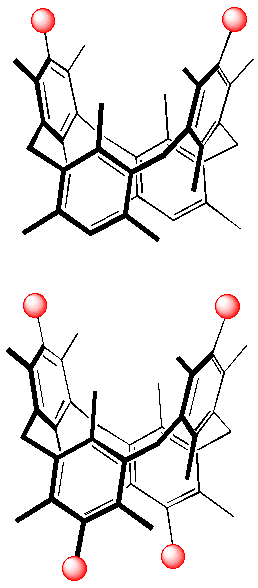 |  |  |
"Molecular tectonics: on the role of counter ions in the dimensionality of silver coordination networks"
D. POCIC, J.-M. PLANEIX, N. KYRITSAKAS, A. JOUAITI, M. W. HOSSEINI Cryst. Eng. Comm., 2005, 7, 624-628.(download .pdf)
Abstract: The role played by different anions (XF6- (X = P, As, Sb), BF4-) on the connectivity of coordination networks formed by a combination of different silver salts and an organic tecton based on piperazine bearing two pyridine units has been studied in the crystalline phase by X-ray diffraction on single crystal. All four weakly coordinating anions lead to the formation of analogous 2-D coordination networks. For the isostructural anions XF6- (X = P, As, Sb) the crystals are isomorphous.
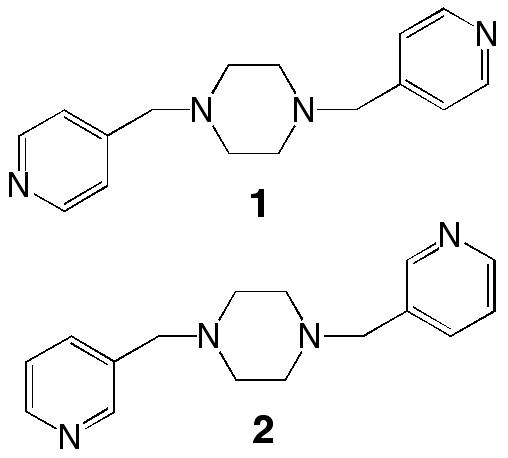 | 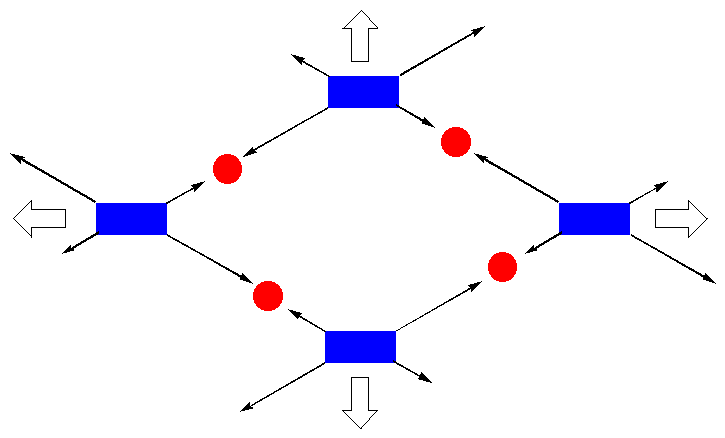 | 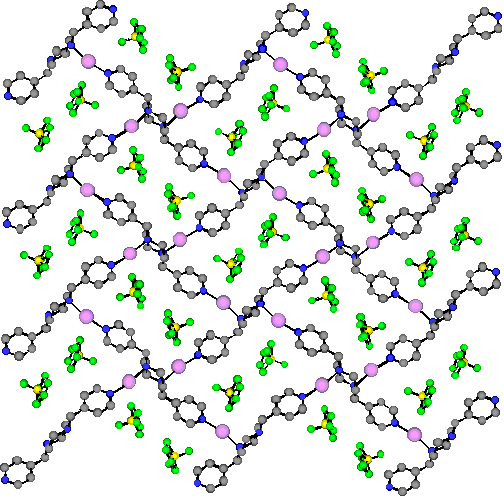 |
"Molecular tectonics: coordination networks based on porphyrins bearing pyridine N-Oxide groups as coordinating sites"
E. DEITERS, V. BULACH, N. KYRITSAKAS, M. W. HOSSEINI New J. Chem., 2005, 29, 1508-1513. (download .pdf)
Abstract: The combination of the two positional isomers 1 and 2, a porphyrin backbone bearing two pyridine N-oxide groups (PNO), with Zn(II) cation leads to 1-Zn and 2-Zn self-complementary tectons which generate in the crystalline phase analogous 1-D zigzag type coordination networks with different metrics. In both cases, only one PNO group bridges the consecutive tecton through coordination to the Zn atom which adopts the square based pyramidal geometry

"Tectonique moléculaire: de tectons simples aux réseaux moléculaires complexes"
M. W. HOSSEINI Actualité Chimique, 2005, 290-291, 59-71.
Abstract: Among various openings brought by supramolecular chemistry, supramolecular synthesis is a domain attracting iMolecular tectonics is a strategy dealing with the design and synthesis of molecular tectons or active building blocks and their interconnection into molecular networks in the solid state. This approach is based on molecular recognition processes leading to recognition patterns and their translation in space affording periodic molecular architectures. Molecular networks are large-size periodic systems generated through self-assembly processes engaging molecular tectons. These millimetric structures may be described as hypermolecules formed by supramolecular synthesis based on reversible non-covalent interactions. In this short and non-exhaustive overview, examples of strategies and networks are presented and discussed in terms of connectivity, geometry and topology.

"Self-assembly and generation of complexity"
M. W. HOSSEINI Chem. Comm., Focus Article, 2005, 582-5829.(download .pdf)
Abstract: Among various openings brought by supramolecular chemistry, supramolecular synthesis is a domain attracting increasing number of researchers.1 Molecular synthesis, the preparation of molecules through interconnection of atoms or group of atoms by strong covalent bonds, is at the heart of chemistry. Based on synthetic knowledge gathered over the last hundred years, chemists are able to prepare extremely sophisticated biotic molecules found in nature or abiotic molecules designed by man. When taking into account the number of different atoms available and their possible combinations, synthetic chemists have endless possibilities in their hands. Since the beginning of supramolecular chemistry in the late sixties, another synthetic approach based on the use of weak and reversible interactions is being developed. This strategy allows to build up complex supramolecular architectures is called supramolecular synthesis (Fig. 1). The latter, by combining molecules through non-covalent interactions, also offers endless possibilities.

"From tectons to composite crystals"
P. DECHAMBENOIT, S. FERLAY, M. W. HOSSEINI, Cryst. Growth & Design, 2005, 5, 2310-2312. (download .pdf)
Abstract: A combination of the tecton 12+ with [MII(CN)6]4- (M = Fe, Ru) complexes anions leads to the formation of analogous 2-D H-bonded networks and isomorphous crystals. Based on the isomorphous nature of the two crystalline systems, the 3-D epitaxial growth of composite crystals upto generation three was achieved and visually demonstrated.
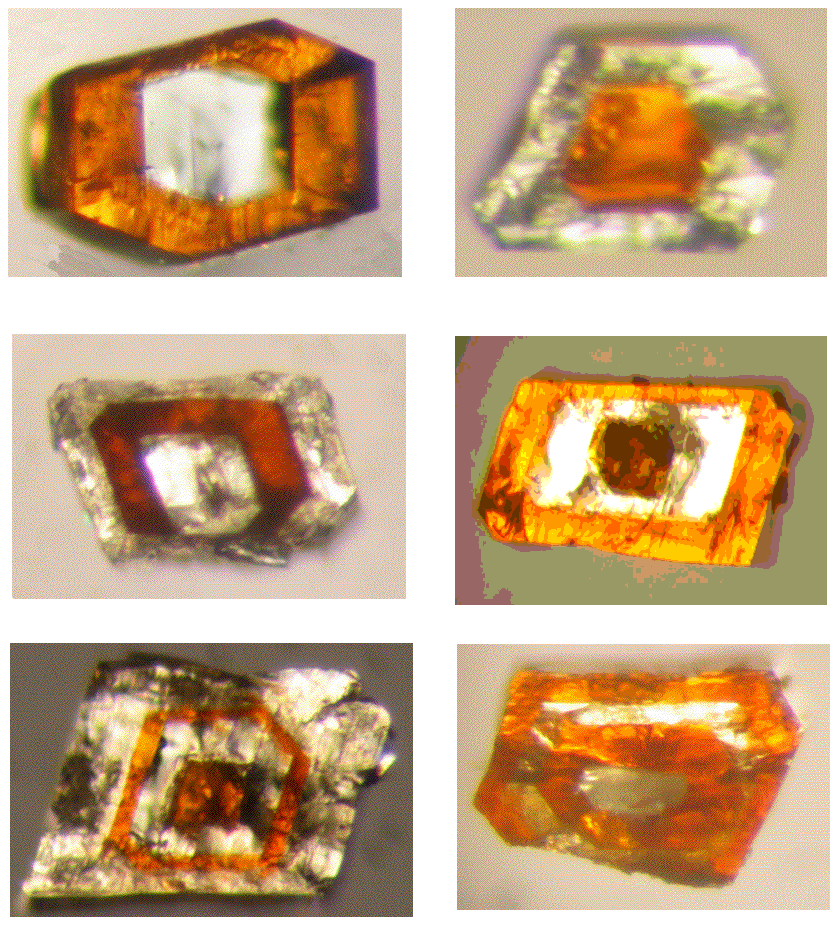
"Reversible single-crystal-to-single-crystal guest exchange in a 3-D coordination network based on a zinc porphyrin"
E. DEITERS, V. BULACH and M. W. HOSSEINI, Chem. Comm., 2005, 3906-3908.(download .pdf)
Abstract : A self-complementary tecton based on a zinc porphyrin core bearing two pyridines at the opposite meso positions leads to the formation of a 3-D coordination network in the crystalline phase. The solid material offers channels which are filled with solvent molecules. The reversible exchange of the guest molecules has been proven to take place in a single-crystal-to-single crystal type transformation demonstrating the robustness of the coordination framework.

"Alkoxo-bridged copper(II) complexes as nodes in designing solid-state architectures. The interplay of coordinative and d10-d10 metal-metal interactions in sustaining supramolecular solid-state architectures"
C. PARACHIV, M. ANDRUH, S. FERLAY, M. W. HOSSEINI, N. KYRITSAKAS, J.-M. PLANEIX, N. STANICA, Dalton Trans., 2005, 1195-1202. (download .pdf)
Abstract : Four novel polymeric coordination networks have been obtained through self-assembly processes involving alkoxo-bridged copper(II) species as nodes, and anionic cyano-complexes as linkers: ∞2[{Cu2(pa)2}{M(CN)2}2] (M = Ag, 1; Au, 2), ∞3[{Cu4(mea)4}{Au(CN)2}4·H2O] 3, and ∞3[{Cu2(pa)2}{Ni(CN)4}] 4 (pa = deprotonated propanolamine; mea = deprotonated monoethanolamine). The supramolecular architectures of compounds 1, 2, and 3 are sustained by argentophilic or strong aurophilic interactions. Compound 3 consists of unique fourfold interpenetrating diamondoid nets. The cryomagnetic investigation of 3 reveals a superposition of ferro- and antiferromagnetic interactions between the copper(II) ions within the heterocubane node.
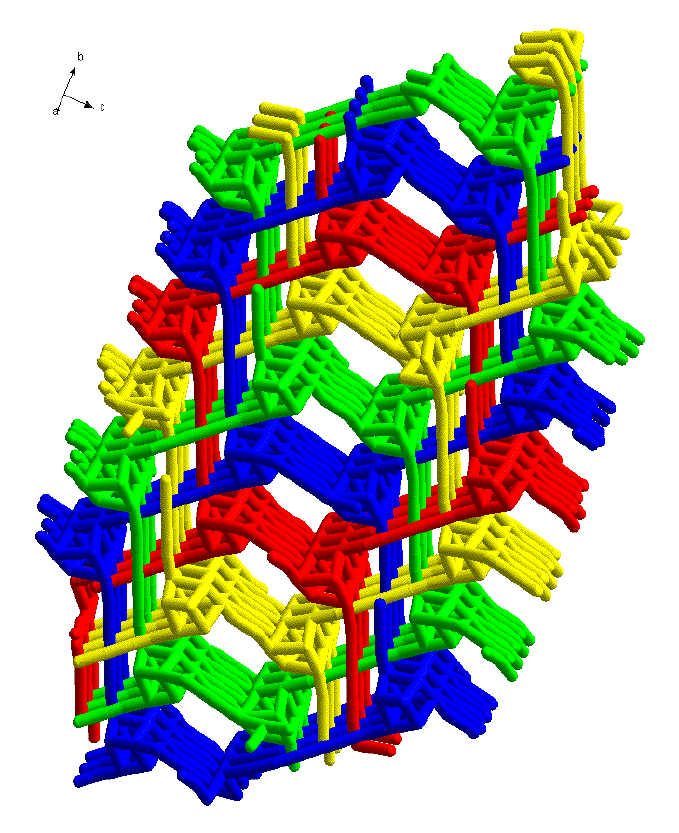
"Translational Design and Bimodal Assembly of Hydrogen-bonded Networks"
D. M. SHACKLADY, S.-O. LEE, S. FERLAY, M. W. HOSSEINI, M. D. WARD, Cryst. Growth & Design, 2005, 5, 995-0310.(download .pdf)
Abstract : The salt [2,2'-(1,4-phenylene)pyrimidine2+][hexacyanocyclopropanediide2-] ([PBA2+<>][C6(CN)62-]) (1) crystallized from organic solvents as two polymorphic forms through charge-assisted N-H…NC hydrogen bonding between the oppositely charged ions. The red polymorph (1R) crystallized in the Fdd2 space group, forming ribbons in which the pair of N-H protons on the same side of the PBA2+ ion exhibited two modes of hydrogen bonding, one that can be described as a motif involving a pair of geminal cyano groups (i.e., on the same methylidene carbon atom) of the C6(CN)62- ion and the other a motif involving a pair of cyano groups on different methylidene carbon atoms. This motif effectively obviates the threefold molecular symmetry of C6(CN)62-, which otherwise may be been expected to promote the formation of a cyclic network. The green polymorph (1G) crystallized in the space group and adopted a “staircase” ribbon motif with “risers” comprising two PBA2+ ions that bridged C6(CN)62- ions through N-H…NC hydrogen bonds. This form also exhibited two modes of hydrogen bonding, the motif and a more complex one involving multiple molecules. The different colors of the polymorphs were assignable to ___ charge-transfer interactions between the weak C6(CN)62- electron donor and the weak PBA2+ electron acceptor in the solid state, a feature suggested by single crystal X-ray diffraction and confirmed by infrared spectroscopy. Heating 1G above 275 °C produced a crystalline white polymorph (1W). The 1R form, however, exhibited thermal stability up to at least 300 °C. The related salt [2,2'-(1,2-ethanediyl)pyrimidine2+]-[hexacyanocyclopropanediide2-] ([EBA2+][C6(CN)62-]) (2Y) crystallized in the P2/c space group as yellow bipyramidal plates, forming infinite hydrogen bonding ribbons. Unlike 1R and 1G, however, 2Y only exhibits the motif because the span of the EBA2+ molecule was not sufficient to form the more demanding hydrogen bonding motif. These structures reveal the metric requirements for hydrogen bonding of the bis(amidinium)2+ ions, which is crucial to the design of the cyclic motif and the choice of guest molecules that can coerce its formation through templating.

"Molecular tectonics: design of 1-D coordination networks based on rigid [1.1.1.1]metacyclophane backbone."
C. KLEIN, E. GRAF, M. W. HOSSEINI, N. KYRITSAKAS-GRUBER, Transactions ACA, 2005, 39, 1-7.
Abstract : Upon combining the rigid bis monodentate organic tectons 2 and 3 based on the [1.1.1.1]paracyclophane backbone and possessing a « V-type » shape with silver cation and mercury chloride, 1-D coordination networks were generated and structurally characterized by X-ray diffraction methods on single crystal. Whereas the tecton 2 leads in the presence of HgCl2 to the formation of a 1-D network with « zigzag » geometry, the combination of the tecton 3 with Ag+ generates a 1-D network which may be described as fused metallamacrocycles.
 |  |  |
"Molecular tectonics: from simple tectons to complex molecular networks"
M. W. HOSSEINI, Acc. Chem. Rres., 2005, 38, 313-323. (download .pdf)
Abstract : Molecular networks in the crystalline phase are infinite periodic molecular assemblies formed under self-assembly conditions between self-complementary or complementary tectons. These millimetric size structures may be regarded as hypermolecules formed by supramolecular synthesis using reversible inter-tectons interactions. Molecular tectonics, based on molecular recognition events and their iteration, is the approach dealing with design and preparation of molecular networks in the solid state. In this Account, an overview of the rational behind this approach is presented. A variety of molecular networks based on Van der Waals interactions, hydrogen and coordination bonding possessing diverse connectivity and topology are discussed.

"Molecular tectonics: design of coordinating tectons based on diazamacrocycles bearing pyridine units and formation of 1-D Copper coordination networks"
E. GRAF, M. W. HOSSEINI, J.-M. PLANEIX, N. KYRITSAKAS, New J. Chem., 2005, 29, 343-346.(download .pdf)
Abstract : Four new bis monodentate tectons 1-4 based on the diazadioxa (5)- and diazatetraoxa (6)-macrocyclic backbones bearing two pyridine units as coordinating sites have been designed and prepared. In the presence of copper diactetate, their ability to form coordination networks was demonstrated by structural studies based on X-ray diffraction methods. Both tectons 1 and 2 behave as bis monodentate units and their bridging by copper diactetate dimer behaving as a linear metallatecton leads to the formation of analogous 1-D coordination networks.
 |  |  |


